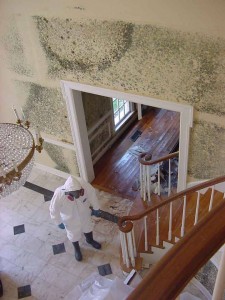 Mold is a common toxin that can be found both indoors and outdoors. It affects any type of building, from schools and factories to family homes. There are over 300,000 mold species, including penicillium, aspergillus, and alternaria. All molds have one thing in common: they need moisture to grow and survive. Since most buildings have at least one source of moisture, mold can occur virtually anywhere. Here are a few tips on how to safely remove mold from your house and keep your family safe:
Mold is a common toxin that can be found both indoors and outdoors. It affects any type of building, from schools and factories to family homes. There are over 300,000 mold species, including penicillium, aspergillus, and alternaria. All molds have one thing in common: they need moisture to grow and survive. Since most buildings have at least one source of moisture, mold can occur virtually anywhere. Here are a few tips on how to safely remove mold from your house and keep your family safe:
Declare War on Spores
It’s important to understand that all molds are dangerous for health. There is no such thing as safe mold. Individuals exposed to mold can develop allergic fungal sinusitis, allergic alveolitis, migraines, asthma, sneezing, cough, chest tightness, red eyes, runny nose, and pneumonitis. Mold exposure symptoms vary from one person to the next. Infants and seniors are more vulnerable to the dangers of mold compared to young, healthy adults.
The key to preventing mold exposure is to control humidity in your home and remove any traces of mold immediately. In case of minor infestation, you can use regular household cleaning products. However, if mold has affected larger surfaces, seek expert help. It’s essential to protect yourself and keep the mold from becoming airborne. Be aware that some types of mold are extremely toxic. These species produce mycotoxins, which may cause serious diseases and even death.
Learn to Identify Mold
Some types of mold can be easily identified, while others are hidden behind the walls or in building materials. Mildew is the most visible type of mold. It appears as black spots on damp walls, in the shower, and on hard surfaces, especially in shady areas.
A surface affected by mildew can be difficult to distinguish from a dirty one. The best way to figure out the problem is to pour a few drops of bleach. If the area lightens after a few minutes, then you’re dealing with mildew. If it remains dark, the area is dirty. Mildew won’t damage your home’s structure, but this doesn’t mean it’s less toxic. If your house is contaminated with mold, you should smell a musty odor.
Remove Large Infestations
Even though it’s recommended to seek professional help in case of larger mold infestations, most homeowners choose to fix this problem themselves. The first step is to remove moldy carpets using a utility knife. Apply water on the affected area to prevent the spores from spreading. Keep the windows open and run an exhaust fun. Wrap moldy carpeting in a plastic foil.
The next step is to remove mold from hard surfaces, such as the floor tiles. Use a 1-to-8 bleach/water solution or a special mold removal product. During this procedure, wear P-100 or N-95 respirators, gloves, and goggles to prevent mold exposure. Use a garden sprayer to moisten moldy areas and control airborne spores. If necessary, open up the wall and check for hidden mold. In case of severe mold damage, you might find rot. Treat the affected surface with a wood preservative and conduct the necessary repairs.
More on http://orange-restoration.com/services/san-diego-mold-removal/
